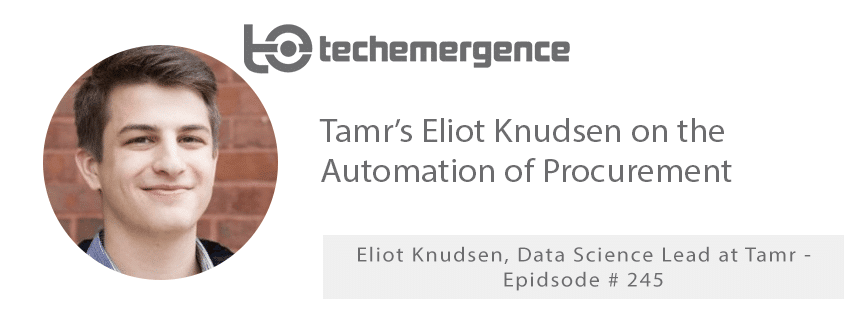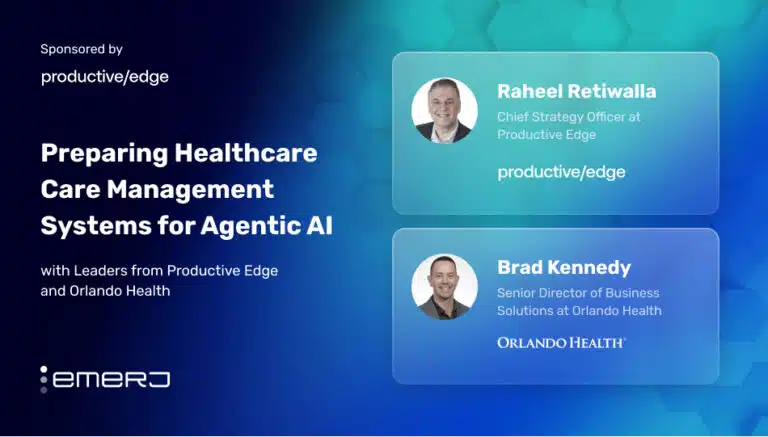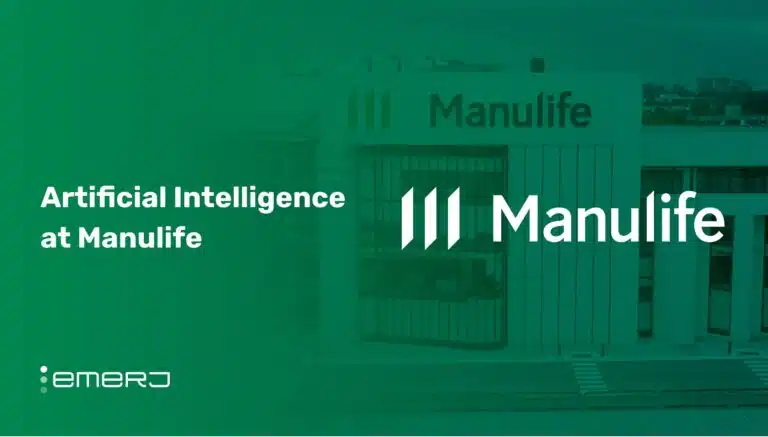Procurement isn’t usually seen as a “sexy” aspect of a business’s operations. Procurement personnel are responsible for sourcing suppliers or vendors, determining criterion of success, negotiating deal terms, and tracking results and deliverables – all of which could be considered “under appreciated” work. This week, Tamr’s Eliot Knudsen walks us through the ways that AI is making it’s way into the procurement process, and what it means for the future of this job function.
(Readers with a specific interest in the specific applications of AI in procurement may want to read our full article on cognitive procurement trends and use cases.)
Listen to the full interview below on Soundcloud:
Guest: Eliot Knudsen, Data Science Lead at Tamr
Expertise: Data science
Brief recognition: Before joining Tamr, Eliot was a data scientist at Kyruus – a healthcare software provider, and a research assistant at Carnegie Mellon, where he studied machine learning and computational mathematics.
Big Idea
The biggest challenge with applying machine learning to procurement is in “wrangling” the data from various enterprise sources.
As with many established industries (most notably healthcare), Eliot identifies “getting a handle on the data” is one of the largest barriers to applying AI fruitfully in procurement. Large, clunky enterprise resource planning (ERP) systems, CRM systems, and other databases somehow need to be connected and integrated so that data can flow and patterns can emerge. One this change happens, Eliot believes, we’ll be able to predict our spend and ROI, and possibly automate various procurement functions.
Another barrier to applying AI to procurement lies in user experience and user interface (UX / UI). Eliot talks about the “Sunday night effect,” where people use very intuitive software on the weekend (iPhone apps, Facebook, Google Drive, Netflix), only to return to work on Monday to handle very stodgy and hard-to-navigate systems in their enterprises.
Eliot believes that better UX will make it possible to have more business users access and manipulate data. Machine learning can’t be done if it takes a week of tinkering to figure out the feature of a software, and procurement-related firms will need to crack UX and UI to make the value of AI’s capabilities known.
Interview Highlights with Eliot Knudsen of Tamr
Listed below are some of the main questions that were posed to Eliot throughout the interview. Listeners can use the embedded podcast player (at the top of this post) to jump ahead to sections that they might be interested in:
- (1:50) What do you see as the major impacts of machine learning’s role in procurement today?
- (7:55) Given all the inherent challenges in data access, what are the elements that we can make the most progress on with AI in procurement in the near term?
- (9:35) Talk to us about the “levers” of AI that might change in terms of the procurement function in business – what are some major ones?
- (15:40) What aspects of the procurement function are least likely to alter in the next 5-10 years?
- (19:20) Why do you think that organizations will continue to rate procurement by savings alone, and not by other longer-term primary drivers?
























